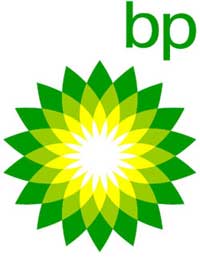Brand Image Lessons from BP’s Gulf Disaster
 BP Provides A Classic Case Study Of How To Screw-Up Your Brand
BP Provides A Classic Case Study Of How To Screw-Up Your Brand
As many of you know, I’m a bit obsessive about branding. In my book, Branding Insights for Small Business, I cover the essential components of an effective branding strategy every successful company achieves: creating a powerful brand image, being authentic to the core values of your business and building goodwill with your customers.
It’s never easy to transcend the signal-to-noise ratio that pervades the marketplace and launch your business or product into public consciousness, and there’s that old adage, “any news is good news.”
But what if your company is responsible for the biggest natural disaster in history? That’s a life-or-death question right now at BP. As a horrified public watches images of oil-covered wildlife, ruined coastal areas and destroyed businesses, the petroleum company that once touted itself as a progressive force in environmentalism is now trying to save the tattered remnants of its corporate reputation.
When the President accuses you of “nickel and diming,” you’ve got a image nightmare on your hands
Even BP’s damage-control efforts have backfired — the company poured $50 million into an apologetic public relations campaign, then saw its efforts backfire when reports surfaced that the company was being stingy with cash compensation for people whose homes and businesses were ruined by the oil spill. Even President Obama even got involved, accusing BP of “nickel and diming the folks down here.”
Of course, few of us are multinational executives, who run corporations operations with such far-reaching consequences. But BP’s missteps provide lessons we can all learn from:
BP spent millions advertising itself as an eco-friendly company, but had three of the largest and deadliest oil-related accidents in the past five years.
– Don’t just say you stand for something — actually STAND something. In the words of a brand strategist who wrote an op-ed for Fast Company: “Pretty logos mean nothing if your actions don’t back up what you say.” Before the oil spill, BP did a great job of positioning itself as an eco-friendly company, but as Fast Company notes, “BP has had three of the largest and deadliest oil-related accidents of the past five years.” That fact has been hammered home as repeated efforts to stop the spill have failed.
– Don’t say anything stupid. This sounds like common sense, but with an army of handlers and highly-paid public relations experts, BP’s chief executive still managed to put his foot in his mouth several times since the disaster. While BP’s share prices dropped by 30 percent and investors lost millions, CEO Tony Hayward complained, “I’d like my life back.” Earlier, he asked a New York Times reporter, “What the hell did we do to deserve this?” Sorry Tony, but when wildlife is dying and people are losing their livelihood by the thousands, people are not going to take pity on a guy who banks $8 million a year — they’re just going to get angry.
– Don’t understate things — be honest. Again, courtesy of Hayward: “The Gulf of Mexico is a very big ocean. The amount and volume of oil and dispersant we are putting into it is tiny in relation to the total water volume.” That’s a bit like saying Katrina “only” flattened one city. And it doesn’t exactly inspire confidence in oil containment efforts when the guy in charge apparently slept through his geography class.
Those are three “don’ts,” but what about the things BP should do?
That’s pretty simple — walk the talk. As I mention in my book, it’s important that your brand is built on authentic core values of the business. And these values need to permeate down to every department and employee so they know exactly what the business stands for and the promise it makes to its customers.
When BP spent millions rebranding itself as a “green” corporation a decade ago, environmental groups pointed out the company had spent more money on its image than it did on renewable energy resources. And as the story unfolds before us, it’s become obvious BP never took its responsibilities seriously beyond appearance. This is a mistake many companies make with their brand efforts: they superficially believe a marketing slogan and ad campaign will define what their company stands for. And they believe employees, shareholders and customers will simply buy into that myth. But if rumors that BP circumvented safety protocols in its deep water drilling are true, then the public backlash could be passionate and intense.
A great PR team is an essential component to any brand emergency, but it’s just as important to remember public relations is only half the battle — if a company’s actions don’t support its brand image, sooner or later that fact will be exposed, and the results could be catastrophic. Just ask Arthur Andersen.
Pingback: 7 Marketing Blunders that Cause Companies to Collapse